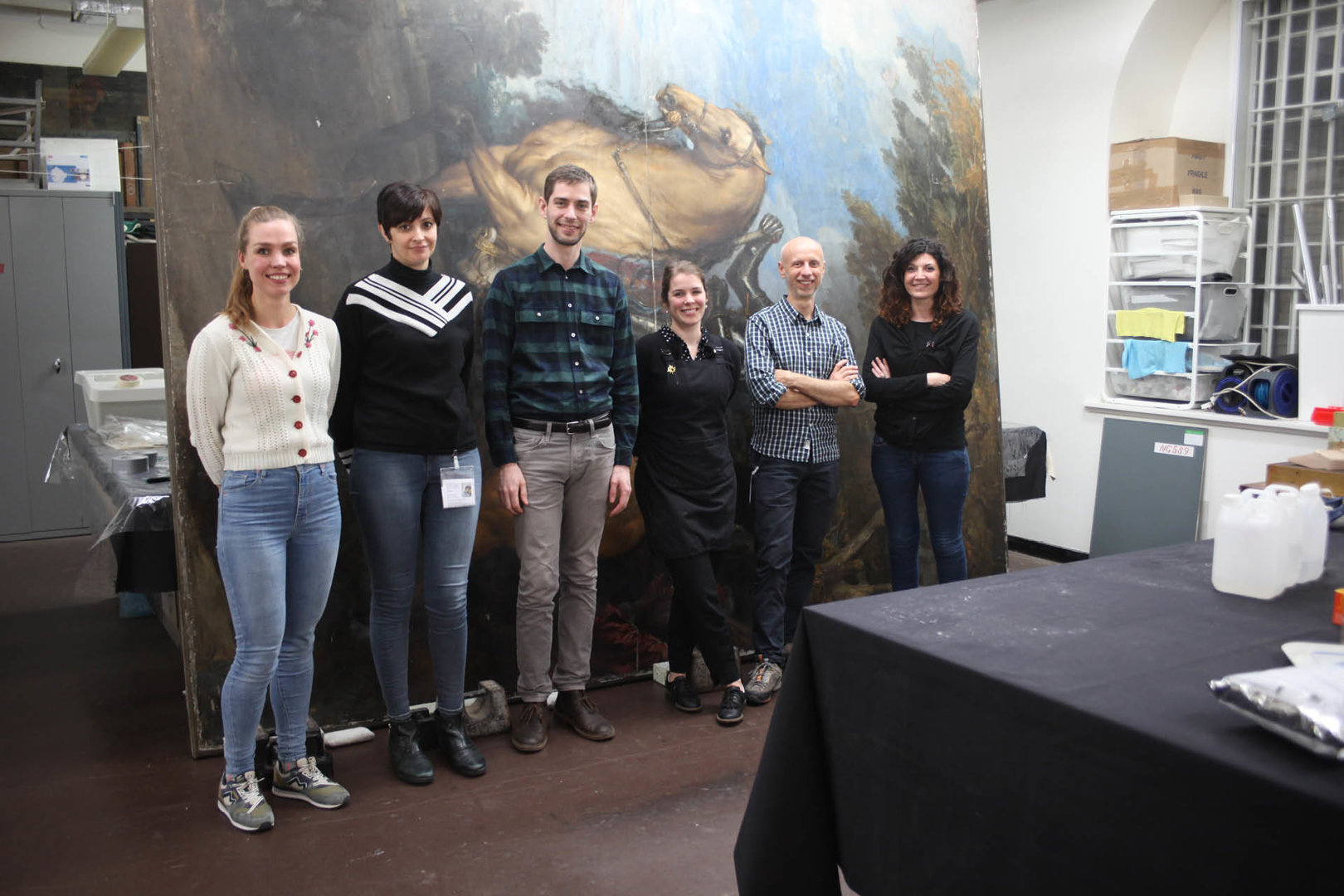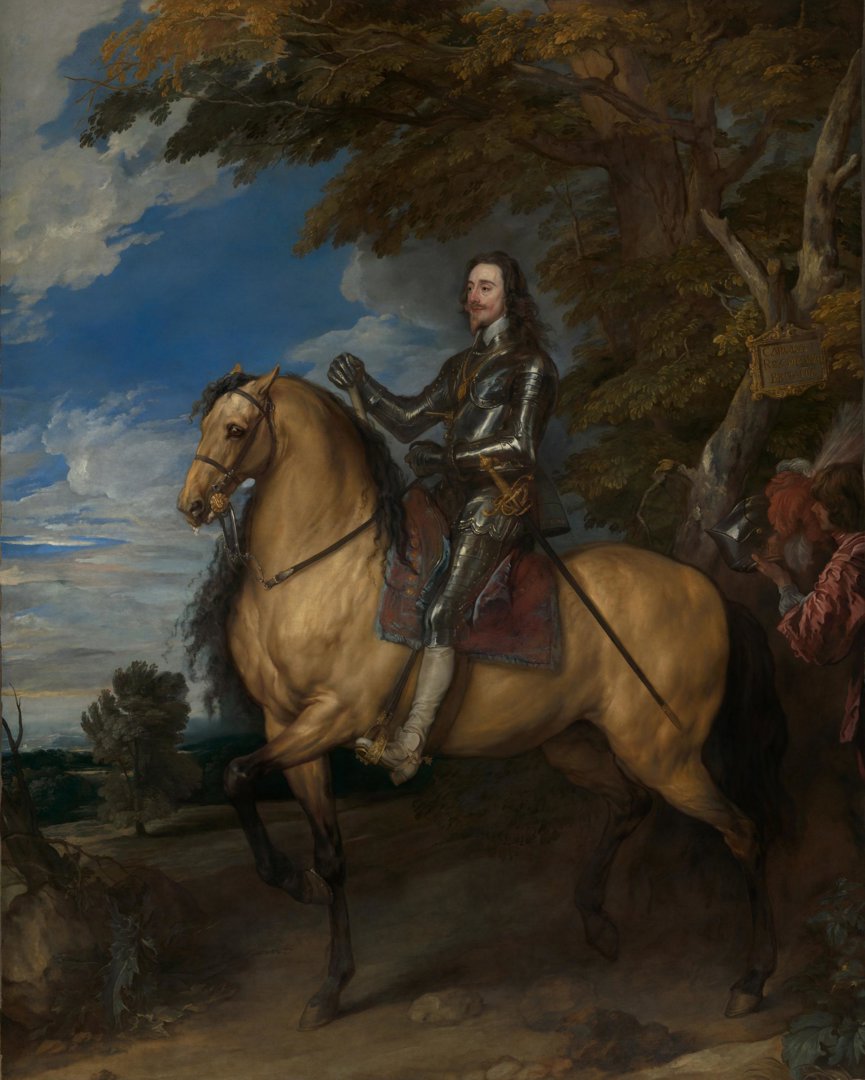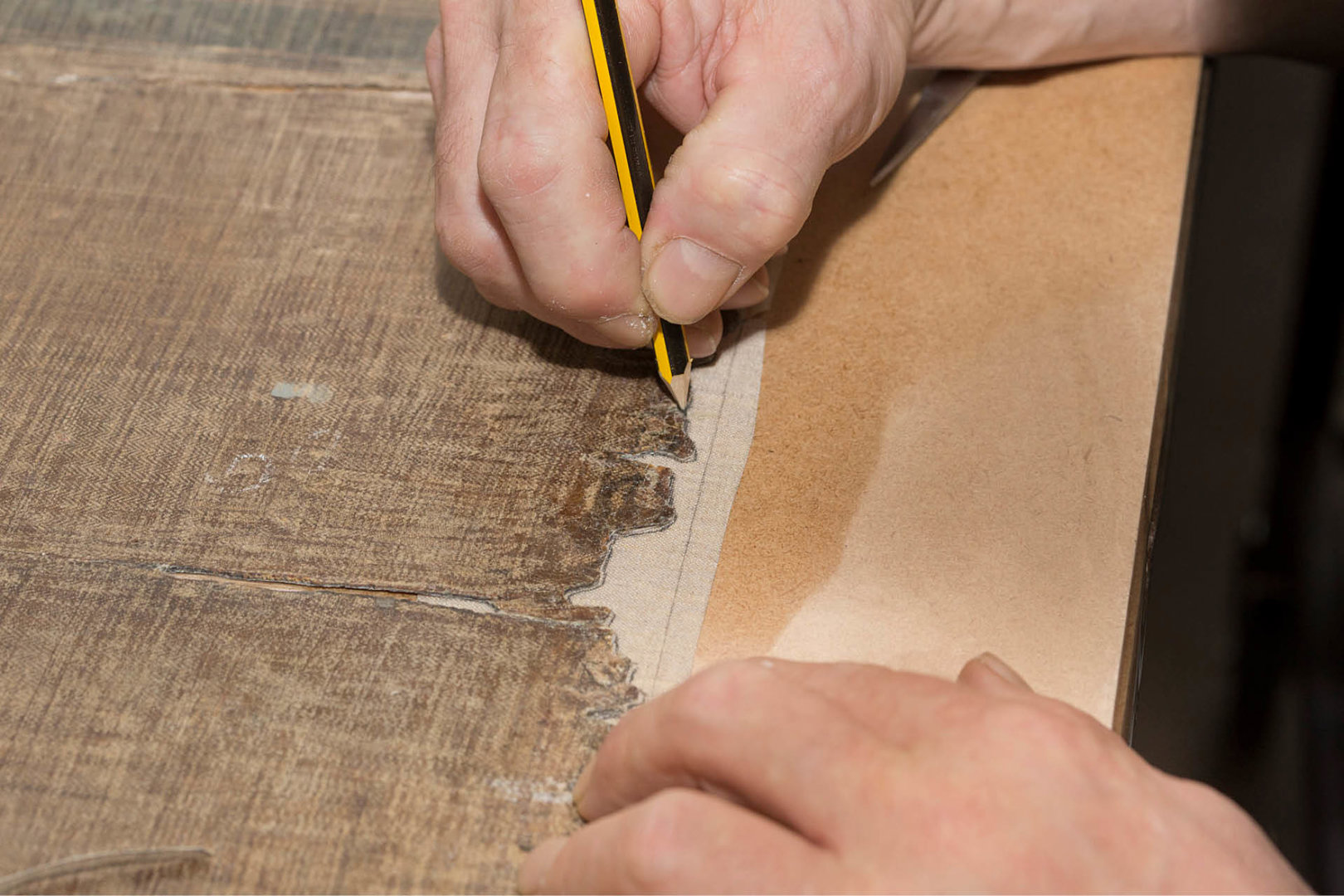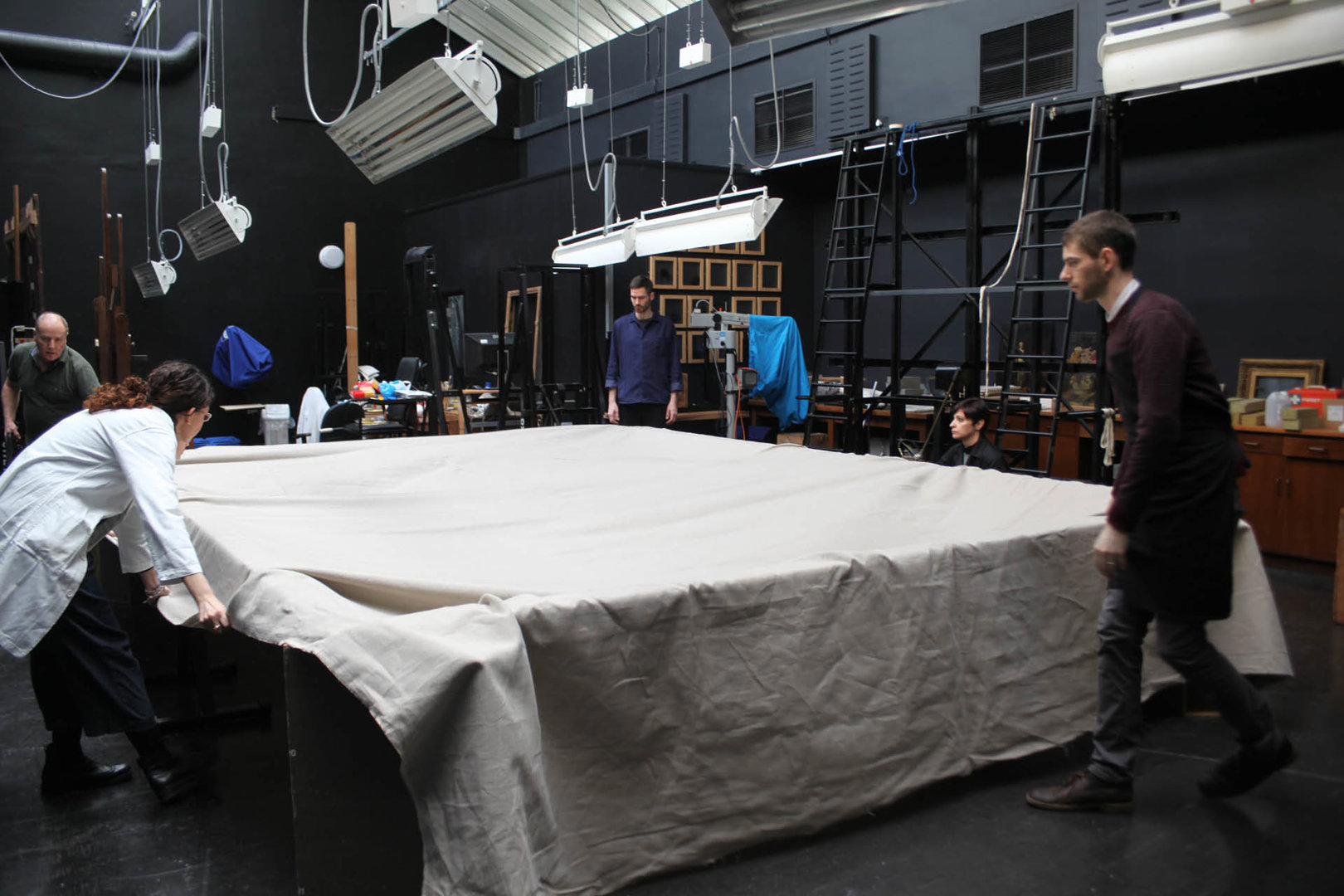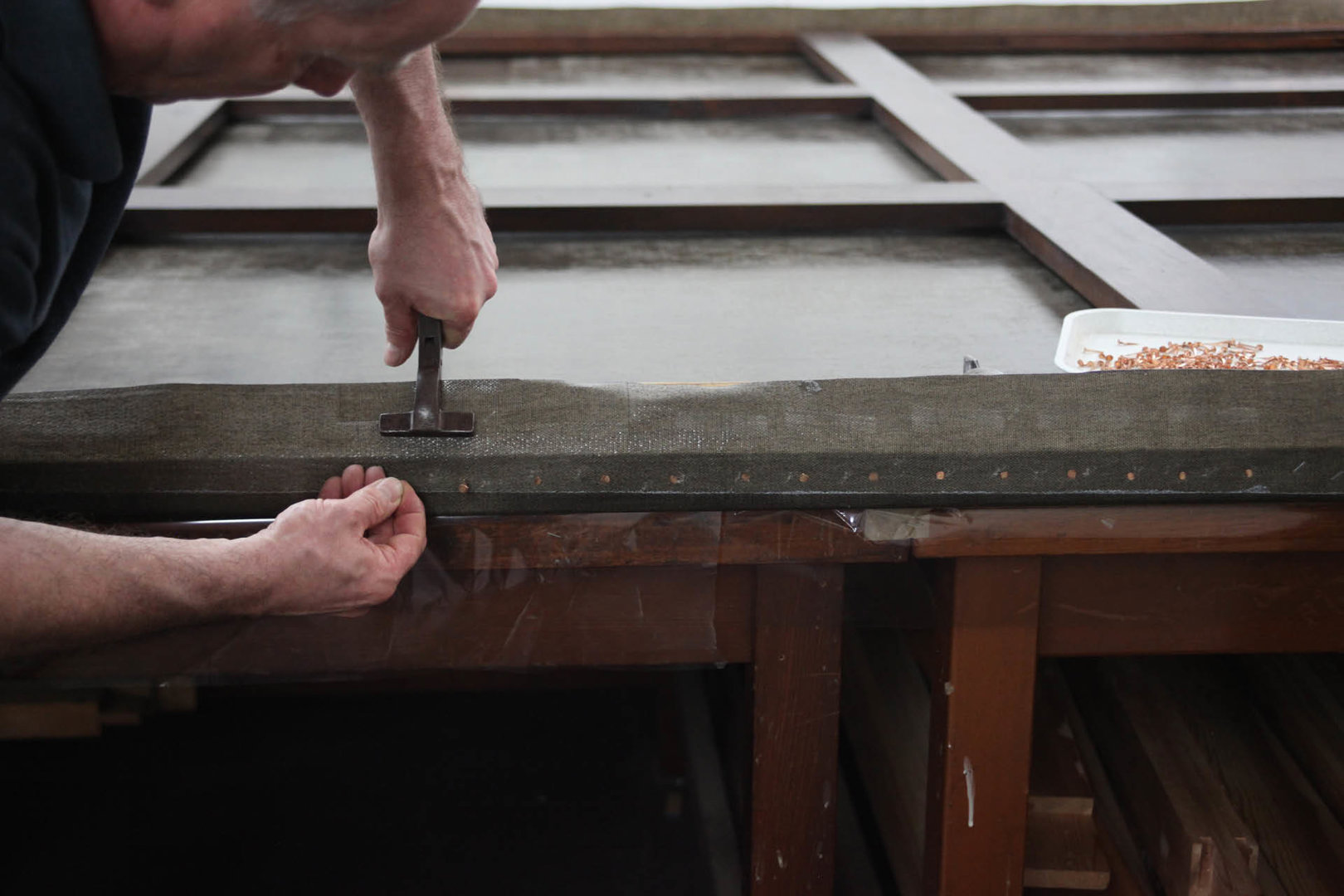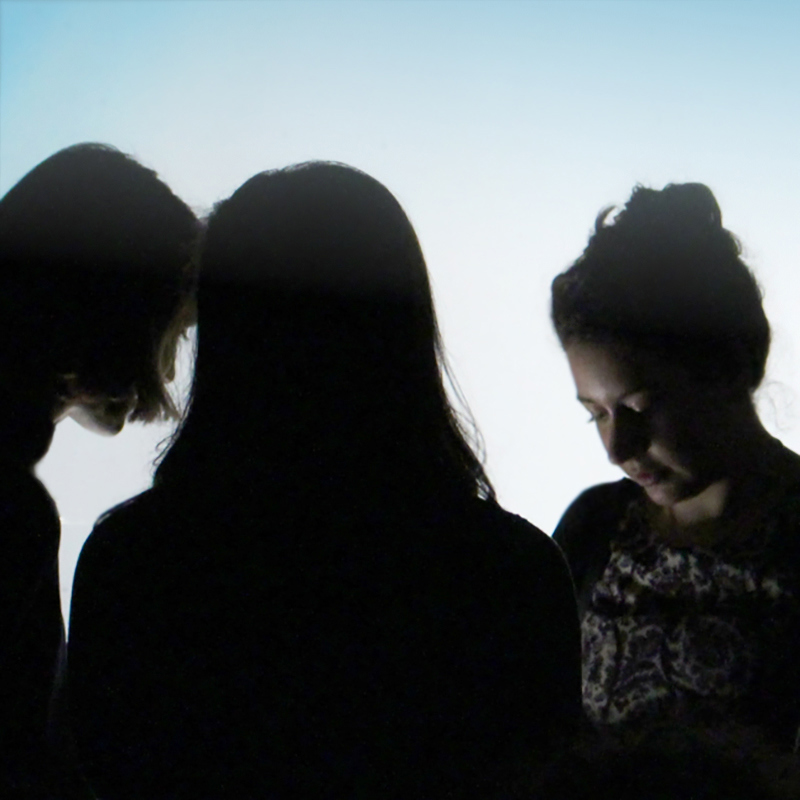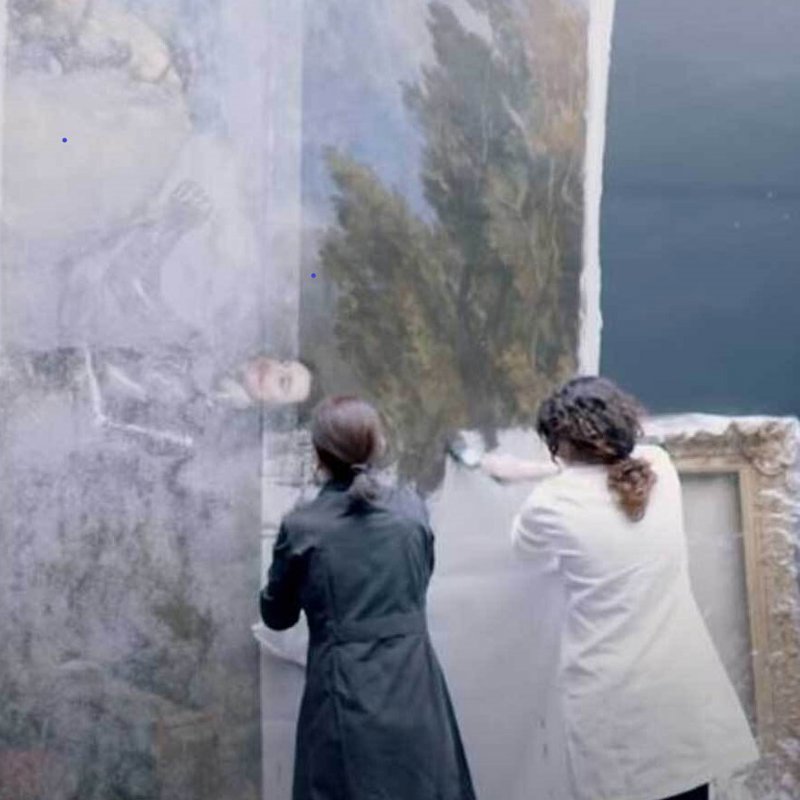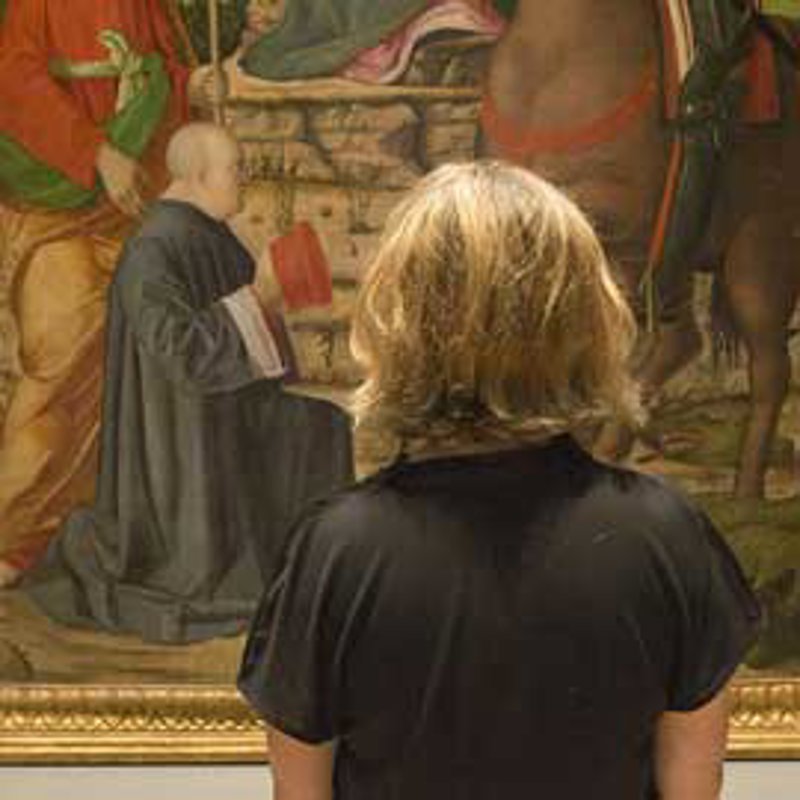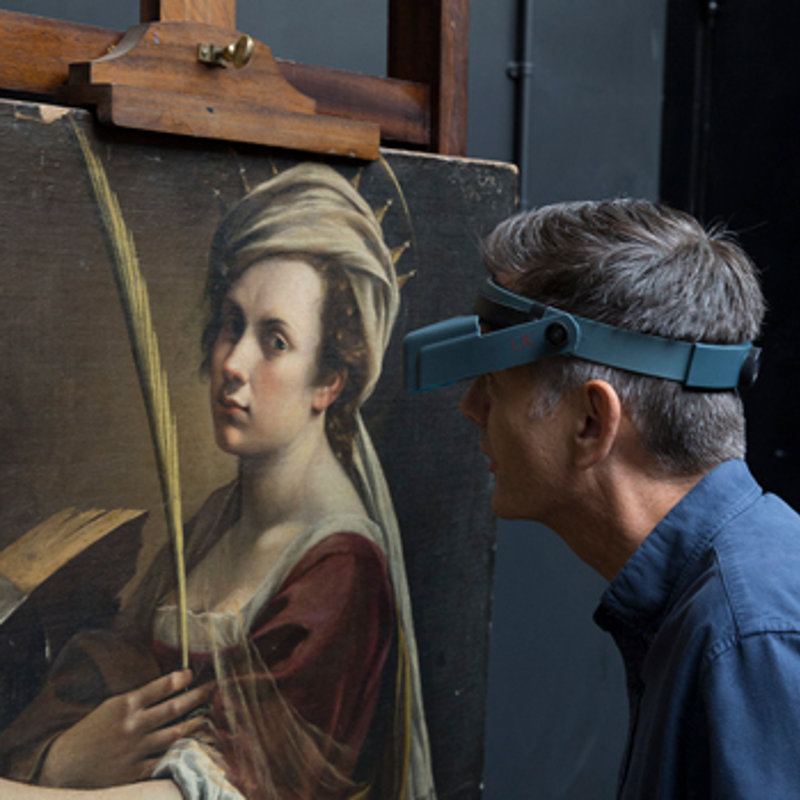At over 3.5 metres high and nearly three metres wide, Anthony van Dyck’s Equestrian Portrait of Charles 1 of about 1637–8 is one of our giants. Acquired by the Gallery in 1885 from 8th Duke of Marlborough, the painting’s a real showstopper; an impressive expression of Charles’s fatal belief in the divine right of kings.
The relining project was part of a long-standing plan to clean and reline the painting. Conservation of the painting’s structure, and original canvas may not be as sensational as the ‘before and after’ transformation of cleaning but is equally as important in preserving the painting . Traditionally, an additional layer of canvas was added to the back of oil paintings as a way of protecting and strengthening the canvas. Over time the lining materials, the lining canvas and the adhesive, deteriorate and these need to be periodically replaced.
Enter Paul Ackroyd, National Gallery Conservator, and the participants in the Getty Foundation's Conserving Canvas Initiative. This Getty initiative focuses specifically on preserving the skill involved in relining paintings on canvas and aims to promote the expertise among conservators worldwide.
As Paul, points out, ‘The challenge for the future of structural conservation of canvas paintings is the lack of people who currently have the skills and experience – this is certainly true in many museums in the world but also in private practice.’
Paul was joined in London by fellow professionals: Gerrit Albertson (Metropolitan Museum, New York), Francesca Bettini (Opificio delle Pietre Dure, Florence), Luigi Orata (opificio delle Pietre Dure, Florence), Camille Polkownik (Royal Collection, London), Lisette Vos (Rijksmuseum, Amsterdam), Eva Martinez (Museo del Prado, Madrid) and Lucia Martinez (Museo del Prado, Madrid) who spent periods in London between January and May 2019.
An expert in the field, Paul’s been teaching relining for the last 25 years, and carrying out linings for about forty years. The participants were keen to learn practical skills as well as organisational planning - many of the conservators were struck by the level of detail and planning that was involved in the relining.
Van Dyck’s painting shows Charles I wearing the medallion of a Garter Sovereign, riding as if at the head of his knights. He is dressed in armour and is holding a commander's baton. The magnificent horse and the muted but rich colours of the saddlecloth, landscape, and the page holding the helmet complement the elegance of the rider.
Akin to manoeuvring a full-sized snooker table, in preparation for the new lining, the newly cleaned painting was taken to our conservation studio equipped for large-scale relining projects.
Face down on the huge table, the ‘patient’ was assessed and the old lining removed, followed by the adhesive which had to be scraped away manually. A demanding exercise, as Gerrit from the Metropolitan Museum New York explains, ‘Spending long hours bent over, mechanically removing old wax-resin adhesive from the reverse of the original canvas was a physically taxing process, as was applying thin layer after thin layer of new adhesive to the huge new lining canvas.’
Once the back of the painting was revealed, the team repaired tears in the canvas and flattened out any bumps and irregularities.
The new canvas was prepared in stages, wetting and re-stretching the material to minimise shrinkage, adding several coats of special, heat-activated adhesive.
In the 1950s a method using vacuum pressure on a heated table was introduced for the lining of paintings. Due to its size, the enormous painting, once sealed in its vacuum envelope, had to be treated in two stages, heating one half, then the other, keeping the unheated section warm under foil and electric blankets.
This procedure in particular needs to be carried out carefully to avoid damaging the surface of the painting – especially as the original canvas may have been weakened as a result of several relining efforts in the past. Being physically present and taking part in a conservation project on this scale is an invaluable experience, according to Lisette from the Rijksmuseum,
‘You can read and hear about such a procedure, but of course, seeing and experiencing the actual act with you own eyes and hands is of utmost importance for really gaining a full understanding.’
Not every studio around the world uses the same technique, nor do they all have the opportunity to work on such large-scale projects; this is where the Getty's initiative comes in. The participants are taught by experienced colleagues who cover the latest techniques and the history of canvas lining. As Francesca from OPD says, ‘It was important for me to see the method of lining with vacuum and synthetic resins. Generally the traditional lining in Italy is with glue paste; a vacuum method is also used but in a different way and in cases of paintings with a different conservation history and not for this size.’
Finally, the painting was reattached to its original stretcher; the end of a comprehensive conservation programme. As for the new lining’s future, Paul reckons, ‘There is no reason why the current lining would last less than one to two hundred years, given the Gallery’s good climate control.’
As part of the project, the National Gallery hosted a group workshop between 20 and 30 participants from around the world in London in September 2019 to extend the initiative’s reach and enable an even wider range of conservators to learn about the project.
The conservators have now returned to their respective museums and galleries and will be able to put their new skills into practice in their own studios and, hopefully, also pass their knowledge on to others in the conservation community. As Gerrit from the Met concludes,
‘The real strength behind the Getty’s programme is that it brings people together to share their experience and knowledge. This will make us all better conservators in the long run.’


